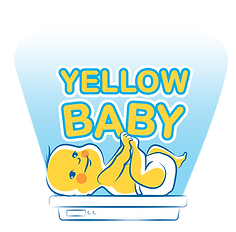Jaundice in Newborn Babies
Jaundice is the name given to yellowing of the skin and the whites of the eyes. Jaundice in newborn babies is very common, is usually harmless and usually clears up on its own after 10–14 days.
Why Does Jaundice Happen?
A baby can develop jaundice when there is an excess of bilirubin in his blood. What is bilirubin, you may ask—it’s a chemical produced during the breakdown of old red blood cells and newborn babies have higher levels of it because they have an access of oxygen-carrying red blood cells. Their livers are not developed enough to metabolise the extra bilirubin.
Jaundiced Baby Symptoms
Yellowing of the skin and the whites of the eyes — the main sign of infant jaundice — usually appears between the second and fourth day after birth.
To check for infant jaundice, press gently on your baby's forehead or nose. If the skin looks yellow where you pressed, it's likely your baby has mild jaundice. If your baby doesn't have jaundice, the skin color should simply look slightly lighter than its normal color for a moment.
Examine your baby in good lighting conditions, preferably in natural daylight.
Which babies are more likely to develop jaundice that needs treatment?
The following babies are more likely to develop jaundice that needs treatment:
-
babies who were born early (at less than 38 weeks of pregnancy)
-
babies who have a brother or sister who had jaundice that needed treatment as a baby
-
babies whose mother intends to breastfeed exclusively
-
babies who have signs of jaundice in the first 24 hours after birth.





